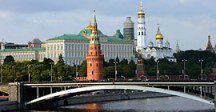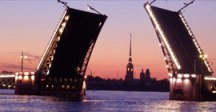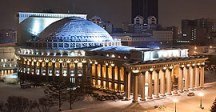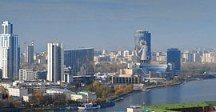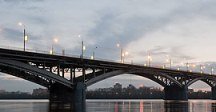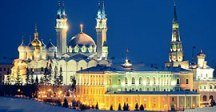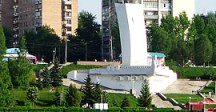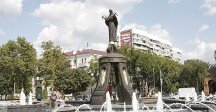Map of Vologda
Detailed interactive map of Vologda. Map of Vologda with streets and numbers of houses. Satellite map of Vologda with sights of the city.
The change between the satellite map of Vologda and the schematic one is made in the lower left corner of the interactive map.
Vologda
Population of Vologda: 308,530 people (2021)
Date of foundation of Vologda: 1147
Vologda city phone code: +7 8172
Vologda city car code: 35
Postal code of Vologda: 160000 - 1609999
Vologda is a Russian city that owes its name to the Volga River. Today Vologda is a major transport center in the North-West of Russia.
The main and most colorful part of Vologda is its historical center, which is important from a cultural and historical point of view, since almost all the monuments there date back to the 18th and 20th centuries. Among the sights of the city are various memorials and a Fair house. The total number of attractions in Vologda is 124, some of which are under state protection.
The most important attraction is the Vologda Kremlin on the riverbank, which is a collection of old buildings. Among them are the Sofia Bell Tower, the Bishop's Court, etc.
What to see in Vologda
The Spaso-Prilutsky Monastery, located in the village of Priluki, which has since been incorporated into the city of Vologda, is one of the best preserved examples of a fortified monastery. The monastery was founded in 1371 by Monk Dmitry, a disciple of St. Sergius of Radonezh, who left his monastery in Pereslavl-Zalessky to found a new one in a more remote place with the support of Grand Duke Dmitry Donskoy.
The Archbishop's Court was established in the Vologda Kremlin between 1671 and 1675 to serve as a residence and administrative center. Since the walls of the Vologda Kremlin are no longer preserved, many people actually mistake the Archbishop's Courtyard for the Kremlin itself, since the courtyard is surrounded by monastery walls. Inside the courtyard you can find some of the oldest surviving stone buildings in the city, built in the middle of the 17th century.
The shopping area is located on the eastern side of the Vologda Kremlin and is so named because once there was a city market, and then shopping malls. There are two churches on the square, both of which are known as located "at the Auction". The Church of the Intercession at Torg was built in the Baroque style between 1778 and 1780, replacing an earlier church that was built by order of Ivan the Terrible when he was in the city.
Monument to Konstantin Batyushkov on Sergei Orlov Street. Konstantin Batyushkov was a Russian poet who was born and died in Vologda. In 1987, on the 200th anniversary of the poet's birth, a statue of Batyushkov was unveiled between Kremlin Square and Vologda. The monument depicts Batyushkov standing next to a horse.
The Lace Museum on Kremlin Square. Vologda and the neighboring region are famous for their lace production, and in a majestic building of the mid-19th century on the main square of the city there is a museum dedicated to this beautiful material.
The first hall is dedicated to the production of lace in Europe and includes samples of lace made with gold and silver thread. However, the main part of the exhibition is devoted to Vologda lace and the history of its production. The museum also has a shop where samples are sold.
The Church of St. Alexander Nevsky stands in the northern part of the Kremlin Square. Originally, there was a wooden church dedicated to St. Nicholas, to commemorate the creation of a copy of the venerated icon of St. Nicholas on the Velikaya River, which passed through Vologda in 1556, returning from Moscow to Vyatka. The current version of the church dates back to the end of the 18th century, when the old wooden church was replaced by a stone one.
St. Sophia Cathedral is the main attraction of Vologda and the oldest preserved building in the city. The construction of the white stone building was started in 1568 during the reign of Ivan the Terrible. However, all construction work was unexpectedly stopped in 1571 by order of the tsar, when the cathedral was not yet completed. It was completely completed and consecrated only in 1587 under Ivan's son Fyodor I.
Varlam Shalamov House Museum. Russian writer Varlam Shalamov was born in Vologda in 1907 and lived in a two-storey house next to St. Sophia Cathedral, which is now a house museum in his honor, until 1924. Shalamov is best known for his works, known as The Kolyma Stories, about his time spent in the Gulag camp in the Russian North. The museum was opened in 1991 and contains information about the author and his works, as well as some personal belongings.
Vologda's main Lenin statue stands on Freedom Square, which is located at the beginning of the boulevard on Pobedy Avenue. The bronze statue was unveiled in 1958 and is the work of sculptor Nikolai Tomsky, known for his numerous statues of the Bolshevik leader.
The Vologda Exhibition Complex at the Turn of the 20th Century consists of three wooden buildings - a mansion, a shop and an apartment building - that once belonged to the Samarin merchant family. The complex was restored as it would have looked at the end of the 19th century and the beginning of the 20th century. The apartment building includes a memorial apartment where Lenin's sister Maria Ulyanova lived in exile from 1912 to 1915.
The Vologda Peter the Great House Museum is located in a small stone building in the middle of the 17th century, where Peter the Great himself stayed five times (1692, 1693, 1694, 1702 and 1724), visiting Vologda. In 1872, it became the first museum to display more than 100 exhibits related to the emperor. Today it remains a museum dedicated to Peter the Great and is managed as a branch of the Vologda State Historical, Architectural and Art Museum-Reserve.
The main square in the Lower Posad part of Vologda is Revolution Square. One monument here is the Eternal Flame in memory of those who died in World War II, which was lit in 1975 on the 20th anniversary of the end of the war. The second monument is dedicated to the events of the October Revolution and the Civil War.
The Vologda Children's Park houses the Church of St. John the Baptist, built in 1710. Before that, there was a wooden church here, which burned down in 1698.
Museum of Vologda exile on Maria Ulyanova Street. Vologda served as a place of exile for political prisoners in the late 19th century and early 20th century, especially during the reign of Prime Minister Stolypin. From December 1911 to February 1912, Joseph Stalin lived in a small wooden house while in exile in Vologda, which in 1937 became a museum dedicated to him. After Stalin's death, the scope of the museum's activities was expanded to cover political exile in Vologda as a whole.
The main war memorial of the city is located in Kirovsky Square. It was opened in 1968 and consists of three pedestals with the names of 173 heroes of the Soviet Union from Vologda and the surrounding area. At the bottom of the pedestals there is a bas-relief depicting the faces of a soldier, a partisan, a sailor and a pilot.
Vologda's Lazy Square is the oldest part of Vologda. It got its name due to the fact that historically there was a "lazy" market where merchants sold their goods directly from their cart. Over the years, several churches have been located here, including the stone Resurrection Church, built in 1792 and destroyed in the 1930s. A simple obelisk dedicated to the 800th anniversary of Vologda was erected in its place in 1959.
The Museum of Forgotten Things on Leningradskaya Street. In 1991, a 19th-century wooden mansion became home to a new museum dedicated to everyday objects of bygone eras. The dining room, living room, children's room and study on the second floor have been carefully recreated to look like they would have looked in pre-revolutionary Russia, using authentic objects and furniture taken from estates around Vologda that no longer exist. Portraits dating from the 18th and 19th centuries are on display on the second floor.
One of the most beautiful churches in Vologda is the Church of Saints Constantine and Elena, which is an example of the decorative architectural style of the Russian pattern. The current preserved version dates back to 1690, but before that the wooden church had stood here since 1503.
The Church of St. Nicholas in Vladychnaya Sloboda dates back to 1669, making it the third oldest surviving church in the city after St. Sophia Cathedral and St. Demetrius Priluk Church.
Vologda sights
St. Sophia Cathedral, Vologda Kremlin, Peter I House, Spaso-Kamenny Monastery, Lace Museum, Spaso-Prilutsky Monastery, Resurrection Cathedral, Zasetsky House, Puzan-Puzyrevsky House, Pharmacy Museum, Vologda Exile Museum, Arseny Komelsky Chapel, Alexander Nevsky Church, Volkov House.
The largest cities in Russia:
2024 © Russia-Karta.ru
